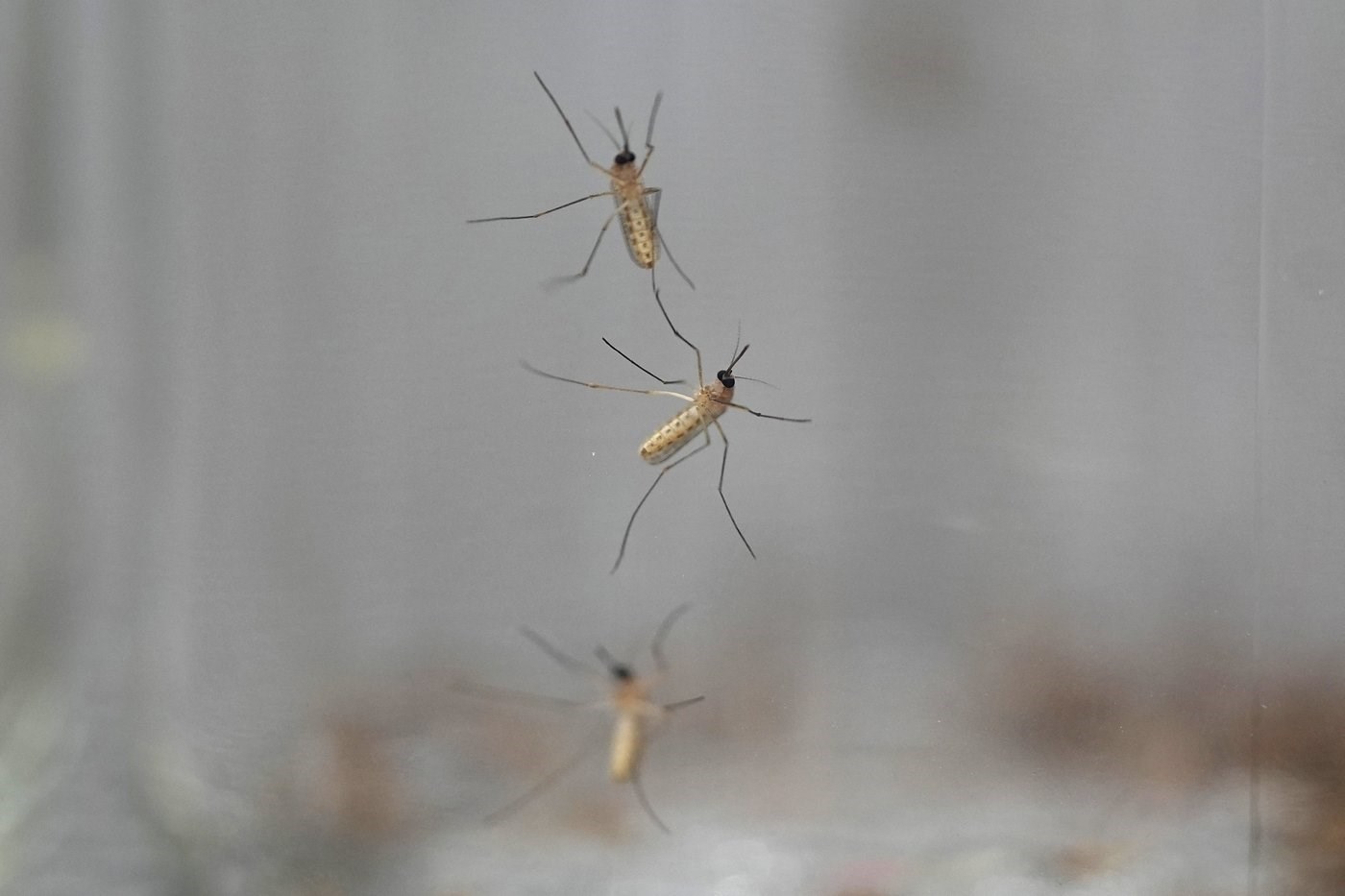
FILE - Mosquitoes cling to the inside of a jar loaded with repellent during a test as part of a tour of the Center for Disease Control laboratory in Fort Collins, Colo., on April 4, 2024. (AP Photo/David Zalubowski, File)
August 05, 2025 - 6:20 AM
I’ve seen a rash of social media posts recommending the application of sticky-tape bands around tree trunks to prevent spotted lanternflies and other garden pests from accessing tree canopies and munching on foliage. But those bands also catch caterpillars, butterflies, bees and birds, which would be difficult to free without ripping off their limbs or breaking their wings.
Similarly, glue traps are cruel devices, holding hostage everything from basement cave crickets to terrified mice and rats until they starve to death.
Recently, after noticing a rustling sound coming from my attic, I discovered a family of squirrels had settled in, presumably after the pregnant mother gained access through an unscreened vent. At that point, securing the vent would have been easy, but would have trapped the critters indoors.
After monitoring the scampering above me for a few days, I surmised that after their early-morning dance parties, the squirrels would leave the house each day, then return after sunset. So, when the disco closed one morning, I sealed up the vent opening, locking them out. Problem solved.
It required more patience than setting out traps or poison, or calling someone to “take care of it,” but it was worth the wait (and it didn’t cost a dime).
Coexisting with wildlife
So-called “nuisance” animals, like squirrels, bats and raccoons, are just living their lives, as we are, and they need food, water and shelter, like we do. It’s not their fault that we chopped down their forested homes, paved over meadows and built neighborhoods in their habitat. They have nowhere else to go, so the least we could do is treat them humanely and share our (outdoor) space with them as much as possible.
When they enter indoor living spaces, however, that means evicting them, as I did. But prevention would have been better. Look for openings in attics, basements, and around windows, doors and soffits, keeping in mind that a mouse can squeeze through a hole as small as the diameter of a pencil.
Check, too, for gaps under eaves, missing chimney caps and broken vents. Ensure there aren’t any animals indoors before sealing them. If you have unwanted residents, wait for them to leave or lure them out so they don’t die in your walls.
If you’re concerned about biting insects, there are better ways to control them than using pesticides, which can expose people, animals and groundwater to harmful chemicals and kill a variety of other insects that serve as an important food source for birds. The products also require repeated applications to maintain that control.
Instead, eliminate mosquitoes from your backyard by preventing them from breeding in the first place.
Don’t allow water to collect anywhere on your property. Get into the habit of emptying plant-pot saucers, overturned trash can lids, tires, children’s playsets and other receptacles after each rainfall (or irrigation session).
Add Bti (Bacillus thuringiensis israelensis), a naturally occurring bacterium sold as Mosquito Dunks and Mosquito Bits, to sources of standing water, such as birdbaths or still ponds, where the insects lay their eggs. The biological control prevents mosquito, gnat and black fly larvae from developing, but is considered harmless to humans, pets, wildlife, beneficial insects, fish and plants.
To discourage wild animals, avoid feeding pets outdoors, tightly secure trash can lids, and physically make your property as inhospitable as possible by sealing entry points, closing garage doors, installing fencing, etc.
If there are babies, please don’t separate them from their mother. Wait a few weeks until they are old enough to leave on their own, as my attic’s squirrels were. Or, call a licensed wildlife rehabilitator for help.
Avoid relocating animals. Many won’t survive; others will return, often from greater distances than you might imagine. It also may be illegal in your state.
Reaching for a spray can might seem like an easy and effective route to a pest-free summer, but it shouldn’t be considered unless you’re facing a legitimate infestation. And in that case, start with the safest, least toxic method and escalate only if necessary.
Indoor problems
Kitchen ants, for example, can be effectively controlled with bait stations.
Some cockroaches can be controlled with baits, as well, but if yours can’t, you have my blessing to hire a certified pesticide applicator (roaches multiply quickly, so common sense must prevail). Remember to do your part by removing clutter, keeping things clean and sealing up entry gaps to prevent a recurrence.
Similarly, it wouldn’t be likely for you to have just one mouse in your house, as they are also prolific breeders. To eliminate indoor rodents, opt for a strong snap trap that will kill instantly without causing the animal to suffer.
___
Jessica Damiano writes weekly gardening columns for the AP and publishes the award-winning Weekly Dirt Newsletter. You can sign up here for weekly gardening tips and advice.
___
For more AP gardening stories, go to https://apnews.com/hub/gardening.
News from © The Associated Press, 2025